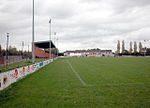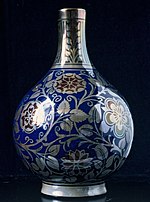Philips Park, Prestwich
Irwell ValleyLocal Nature Reserves in Greater ManchesterParks and commons in the Metropolitan Borough of BuryPrestwichUrban public parks in the United Kingdom ... and 2 more
Vague or ambiguous time from February 2021Whitefield, Greater Manchester
Philips Park is an area of parkland situated within the Metropolitan Borough of Bury on the boundary of Whitefield and Prestwich, in Greater Manchester. The park consists of rich woodland and grassland habitat and is home to an assortment of wildlife. Two thirds of the site was once the Philips family estate, and the remainder, known as Waterdale, is Irwell Valley land reclaimed following the demolition of two bleach and dye works. The park is a local nature reserve.The park is also home to the Barn Countryside Centre. The visitor centre hosts many events for all ages, including willow weaving and pottery workshops, pond dipping and woodland management training courses.
Excerpt from the Wikipedia article Philips Park, Prestwich (License: CC BY-SA 3.0, Authors).Philips Park, Prestwich
Red Route,
Geographical coordinates (GPS) Address Nearby Places Show on map
Geographical coordinates (GPS)
| Latitude | Longitude |
|---|---|
| N 53.53263 ° | E -2.307537 ° |
Address
Red Route
M45 7QJ , Park Lane
England, United Kingdom
Open on Google Maps







